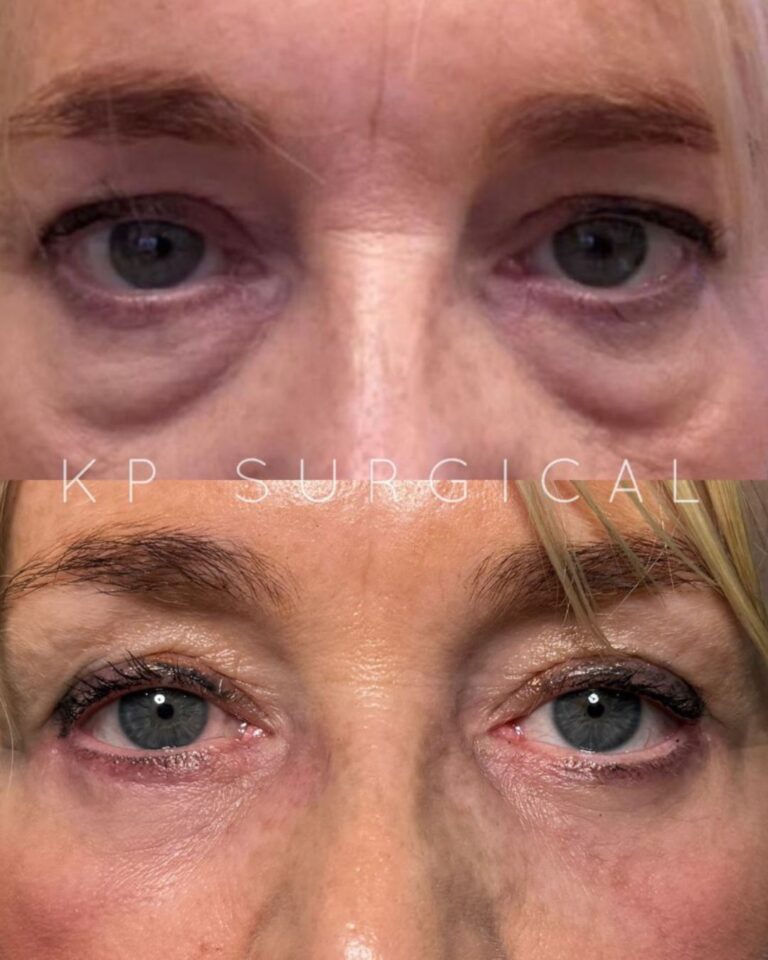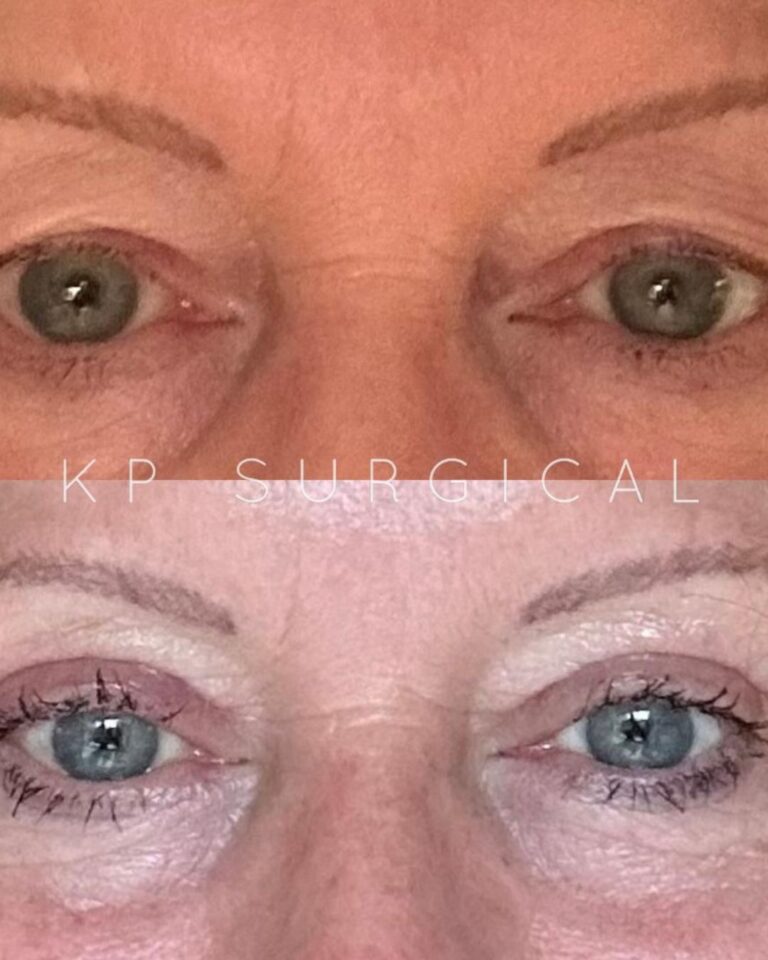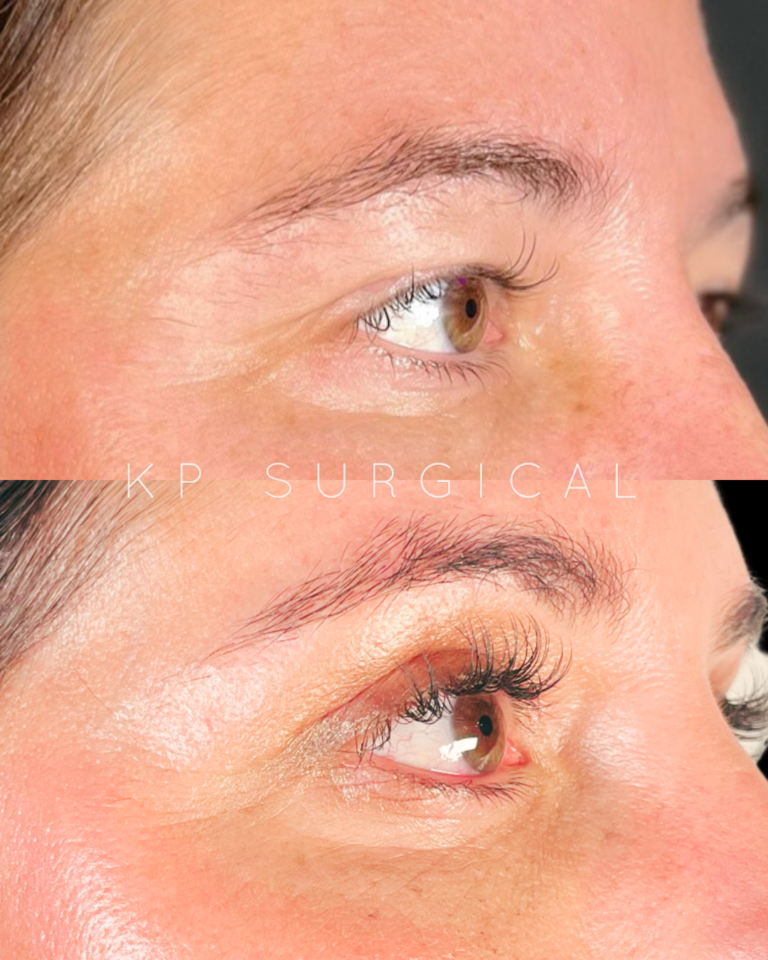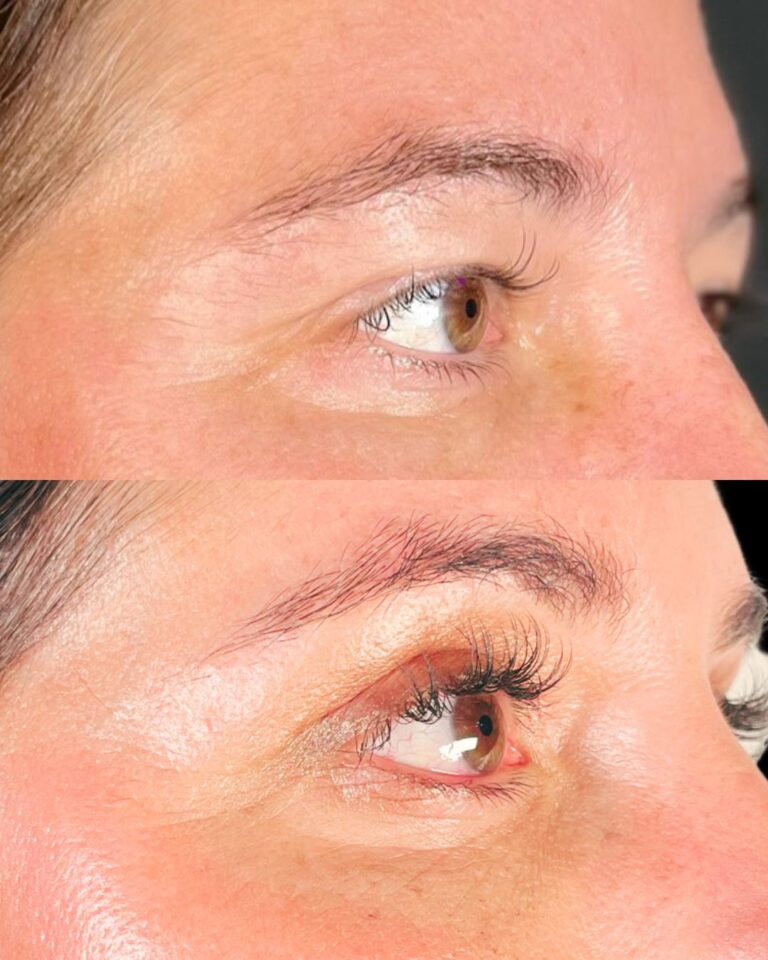SURGICAL PROCEDURE
Blepharoplasty
TREATMENT OVERVIEW

THE PROCEDURE
The journey to a Blepharoplasty begins with an initial consultation. During this session, the surgeon assesses the patient’s eyelids, discusses their concerns, and determines the extent of the procedure required. This consultation is crucial for setting expectations and ensuring the patient’s goals align with the potential outcomes.
The decision-making process for anaesthesia is collaborative, taking into account the patient’s comfort, health status, and the extent of the surgery. Typically, local anaesthesia with sedation is preferred, but general anaesthesia might be recommended in some cases.
The surgical techniques employed in Blepharoplasty involve making incisions within the eyelids’ natural creases, ensuring minimal visible scarring. The surgeon can remove or reposition excess skin, fat, or muscle through these incisions, achieving the desired eyelid contour.
Post-surgery, the incisions are carefully sutured and, in some cases, bandaged. The surgeon might also apply ointments to reduce the risk of infection and aid the healing process. The meticulous nature of the procedure ensures that post-surgical marks are minimal and blend naturally with the eyelid’s creases.
AT A GLANCE
- Surgery: 2 Hours
- Time off work: 7 Days
- Before you drive: 7 Days
- Return to Gym 4 Weeks
- Lift a small child: 7 Days
- Final Results: 3 - 6 Months
Actual return to activity times will be discussed and agreed with your Surgeon.
BEFORE & AFTER






THE BENEFITS

RISKS
THINGS TO AVOID
AFTER SURGERY
- Heavy lifting or strenuous exercise for 3-4 weeks.
- Smoking and alcohol consumption, as they can impair wound healing.
- Prolonged sun exposure to the surgical area; wear sunglasses and apply sunscreen.
- Tight or constrictive clothing that may irritate the incision sites.
- Spicy foods or foods high in sodium that may exacerbate swelling.
- Over-the-counter medications like aspirin or ibuprofen that can affect blood clotting; follow your surgeon's recommended pain relief regimen.
- Swimming pools, hot tubs, or saunas to avoid infection risks.
- Rubbing or touching your brow area unnecessarily; be gentle with your incisions.
- Excessive screen time or prolonged reading during the early recovery phase.
- Excessive exposure to dust, wind, or allergens that could irritate your healing brow area.
- Wearing contact lenses instead of glasses during the initial recovery period.
- Any activity that increases blood pressure to the face or brow area.
Post Op AFTERCARE
- Medications: Surgeons typically prescribe a combination of antibiotic ointments to ward off infections and lubricating eye drops to alleviate dryness. Following the medication schedule diligently is crucial and reporting any adverse reactions.
- Eye Protection: The eyes can be sensitive post-surgery. Sunglasses are a must when venturing outdoors, not just for UV protection but also to shield the eyes from dust and wind. For those who wear corrective lenses, switching to glasses from contact lenses for a few weeks is advisable.
- Sun Exposure: Direct sun exposure can lead to pigmentation changes in the newly healed skin. Using a broad-spectrum sunscreen and wearing a wide-brimmed hat can offer added protection.
- Long-term Care: Even after the immediate recovery phase, it's essential to maintain good eye health. Regular eye check-ups, moisturising eye drops if dryness persists, and protecting the eyes from excessive sun exposure are all part of long-term aftercare.

